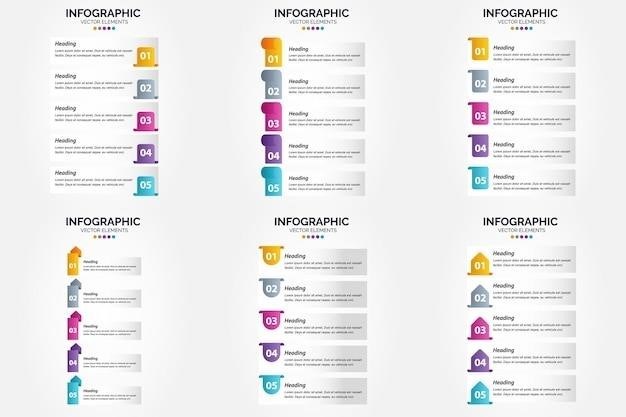free uspap pdf download
Understanding USPAP
USPAP is a comprehensive set of standards for appraisal practice in the United States․ These standards are essential for ensuring ethical and professional conduct in the appraisal industry․
What is USPAP?
USPAP stands for Uniform Standards of Professional Appraisal Practice․ It is a set of guidelines and standards that regulate the appraisal profession in the United States․ USPAP was adopted by Congress in 1989 and is overseen by The Appraisal Foundation, a non-profit organization․ These standards are designed to ensure that appraisals are conducted ethically, professionally, and with a high level of accuracy․ USPAP covers all types of appraisal services, including real estate, personal property, business, and mass appraisal․
The Appraisal Foundation also publishes the USPAP Reference Manual, which provides guidance and interpretation of the standards․ This manual is an essential resource for appraisers and anyone who uses appraisal services․ The USPAP Reference Manual is available for purchase from The Appraisal Foundation’s website, but certain portions of the USPAP are now available online to the public in a free, downloadable, searchable format․ The Appraisal Foundation is currently working to make more sections of the USPAP available online․
The Importance of USPAP
USPAP plays a crucial role in maintaining the integrity and reliability of the appraisal profession․ It establishes a common set of standards that appraisers must adhere to, ensuring consistency and accuracy in their valuations․ This consistency is essential for various stakeholders, including lenders, buyers, sellers, and government agencies․
By adhering to USPAP, appraisers demonstrate their commitment to ethical practice and professional competency․ This, in turn, builds trust and confidence in the appraisal process․ The importance of USPAP is underscored by its adoption by Congress and its widespread acceptance within the industry․ It serves as a benchmark for ethical conduct, professional competence, and the accurate assessment of property values․ The free availability of certain portions of USPAP online further promotes transparency and accessibility within the appraisal profession․
Accessing USPAP
The Appraisal Foundation provides various options for accessing USPAP, including free online resources and paid downloads․
USPAP Download Options
While the Appraisal Foundation no longer offers a free downloadable version of the full USPAP manual, they do provide access to certain portions of the document․ The first 30 pages of the USPAP publication are available for free download in a searchable format․ This provides an introduction to the standards and their structure․ For those seeking the complete USPAP manual, the Appraisal Foundation offers a PDF download option for a fee․ This paid version includes all sections of USPAP and allows for offline access and printing․
Previous editions of USPAP, including the 2016 and 2018-2019 editions, are also available as PDF downloads․ The Appraisal Foundation provides a range of purchase options, including individual editions, combo packages, and electronic versions․ Some options include both a hard copy and a downloadable PDF copy of the USPAP manual․
Free USPAP Resources
While the complete USPAP manual may not be freely downloadable, The Appraisal Foundation offers several free resources to assist appraisers and those seeking to understand USPAP․ The organization provides a free online-only version of USPAP Standards 1-4 on their website, USPAP․org․ These standards outline the requirements for both real property appraisals and appraisal reviews․ The Appraisal Foundation also provides a free guide on how to use the USPAP Reference Manual․ This guide is a valuable tool for understanding the manual’s structure and navigating its contents․
Additionally, The Appraisal Foundation offers a free 7-hour online USPAP Update Course․ This self-paced course explores various USPAP topics and provides case studies to illustrate the application of the standards․ This free course is a valuable resource for appraisers looking to stay up-to-date on the latest developments in USPAP and ensuring compliance with these essential standards․
USPAP Purchase Options
For those seeking a complete and up-to-date copy of USPAP, The Appraisal Foundation offers several purchase options․ The most comprehensive option is the “USPAP Combo Package,” which includes both a printed copy and a downloadable PDF version of the current edition․ The printed version provides a tangible resource for reference, while the downloadable PDF allows for convenient access and searching on electronic devices․
The Appraisal Foundation also offers the option to purchase individual copies of USPAP in either printed or downloadable PDF format․ This allows appraisers to choose the format that best suits their needs and budget․ The downloadable PDF version is priced at $75․00, while the printed version may have a slightly higher price depending on the edition․ To ensure document security, electronic publications are locked and do not allow for printing or copying text․
For those needing access to past editions of USPAP, The Appraisal Foundation offers a dedicated phone line to assist with ordering previous editions․
USPAP Content
USPAP is comprised of five sections⁚ Preamble, Definitions, Rules, Standards, and Statements on Appraisal Standards․
USPAP Standards
USPAP Standards are the core of the Uniform Standards of Professional Appraisal Practice․ They are the rules and requirements that appraisers must follow when conducting appraisals․ These standards are designed to ensure the accuracy, objectivity, and reliability of appraisal reports․ There are four main USPAP Standards⁚
- Standard 1⁚ This standard establishes requirements for the development and communication of a real property appraisal․
- Standard 2⁚ This standard establishes requirements for the development and communication of a real property appraisal․
- Standard 3⁚ This standard establishes requirements for the development and communication of an appraisal review․
- Standard 4⁚ This standard establishes requirements for the development and communication of an appraisal review․
The Standards establish the requirements for appraisal and appraisal review and the manner in which each is communicated․ Standards 1 and 2 establish requirements for the development and communication of a real property appraisal․ Standards 3 and 4 establish requirements for the development and communication of an appraisal review;
USPAP Advisory Opinions
USPAP Advisory Opinions provide guidance and interpretation of USPAP Standards․ They are issued by the Appraisal Standards Board (ASB) of The Appraisal Foundation to address specific questions or situations that arise in appraisal practice․ Advisory Opinions are not part of USPAP itself, but they serve as valuable resources for appraisers and other stakeholders in understanding the application of USPAP principles․
The ASB issues Advisory Opinions in response to inquiries from appraisers, state enforcement agencies, and other interested parties․ These opinions clarify the meaning and intent of USPAP Standards, addressing potential ambiguities or providing guidance on specific appraisal situations․ Advisory Opinions are intended to help appraisers comply with USPAP requirements and ensure the quality and consistency of appraisal practices․
USPAP FAQs
The Uniform Standards of Appraisal Practice (USPAP) materials include a comprehensive set of Frequently Asked Questions (FAQs) to provide guidance and clarification on various aspects of appraisal practice․ These FAQs are developed by The Appraisal Standards Board (ASB) of The Appraisal Foundation to address common questions and concerns that appraisers encounter in their daily work․
The USPAP FAQs cover a wide range of topics, including the application of USPAP Standards, ethical considerations, appraisal methodologies, reporting requirements, and other related issues․ They are intended to provide practical guidance and insights to appraisers, helping them navigate complex appraisal situations and ensure compliance with USPAP requirements․ The FAQs are updated regularly to reflect changes in appraisal practice and industry standards, ensuring that they remain relevant and informative․

Using USPAP
USPAP is a valuable resource for appraisers, ensuring ethical and professional conduct in the appraisal industry․
USPAP Reference Manual
The USPAP Reference Manual is a comprehensive guide that assists appraisers in understanding and applying the Uniform Standards of Professional Appraisal Practice (USPAP)․ It serves as a valuable tool for navigating the complex world of appraisal standards, providing clarity and guidance on various aspects of appraisal practice․ The manual is designed to be a user-friendly resource, offering a structured approach to finding answers to common USPAP-related questions․ It encompasses a wealth of information, including detailed explanations of USPAP requirements, illustrative examples, and practical applications․
The USPAP Reference Manual is an essential resource for appraisers seeking to maintain compliance with USPAP standards․ It provides a structured approach to understanding and applying the standards, ensuring that appraisers adhere to the ethical and professional guidelines that underpin the appraisal profession․ The manual’s comprehensive nature and user-friendly format make it an invaluable tool for appraisers of all experience levels, facilitating their understanding and application of USPAP principles․
USPAP Update Course
The USPAP Update Course is a crucial component of ongoing professional development for appraisers; It ensures that appraisers stay abreast of the latest changes and updates to the Uniform Standards of Professional Appraisal Practice (USPAP)․ This course is designed to provide a comprehensive overview of recent modifications, clarifications, and additions to USPAP standards․ By participating in the USPAP Update Course, appraisers can maintain their knowledge of current appraisal practices, ensuring compliance with evolving industry regulations and ethical guidelines․
The course covers a wide range of topics, including updates to the USPAP standards, new Advisory Opinions, and recent developments in appraisal methodology․ It provides a structured approach to understanding and applying the latest USPAP requirements, enabling appraisers to confidently navigate the evolving landscape of appraisal practice․ Through interactive learning materials and engaging case studies, the USPAP Update Course equips appraisers with the necessary knowledge and skills to maintain their professional competence and provide accurate and reliable appraisal services․
USPAP Compliance
USPAP compliance is paramount for appraisers, as it ensures the accuracy, reliability, and ethical integrity of their work․ Adhering to USPAP standards is not merely a matter of meeting legal requirements; it is a fundamental principle of professional responsibility․ Appraisers who demonstrate consistent compliance with USPAP gain the trust of their clients, lenders, and the broader real estate community․ This trust is essential for maintaining a strong reputation and ensuring the credibility of appraisal services․
Compliance with USPAP encompasses a wide range of practices, including proper documentation, adherence to ethical guidelines, and the use of appropriate appraisal methodologies․ It involves a thorough understanding of the latest USPAP standards, updates, and interpretations․ Appraisers who prioritize USPAP compliance demonstrate their commitment to professionalism, accuracy, and the highest standards of practice․ This commitment is essential for upholding the integrity of the appraisal profession and ensuring fair and transparent valuations in the real estate market․


















